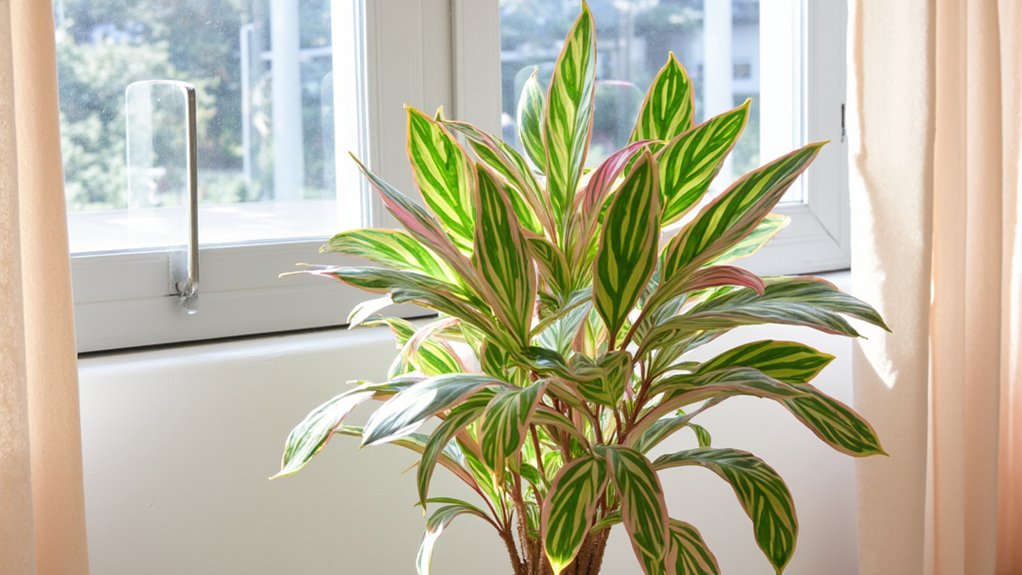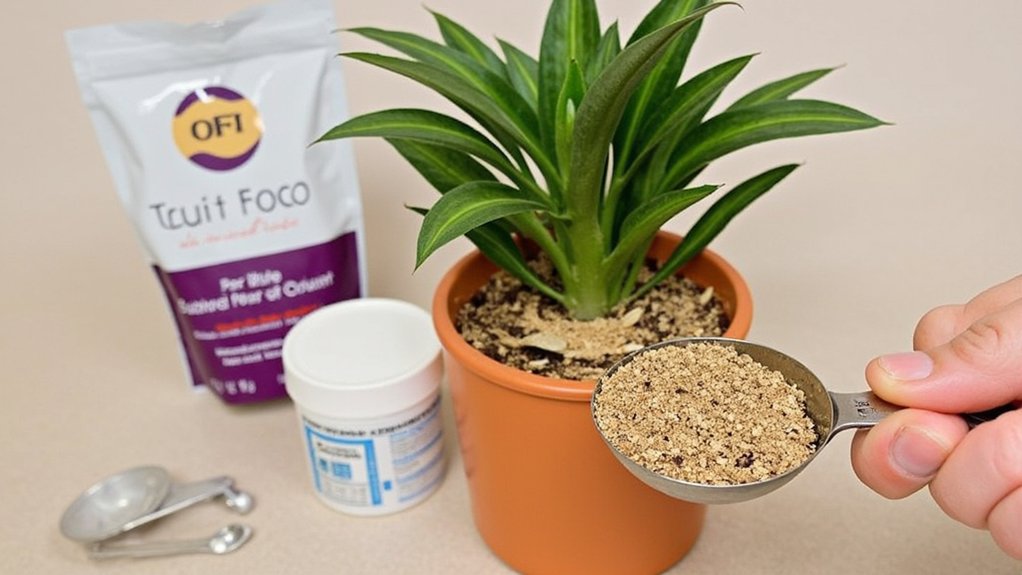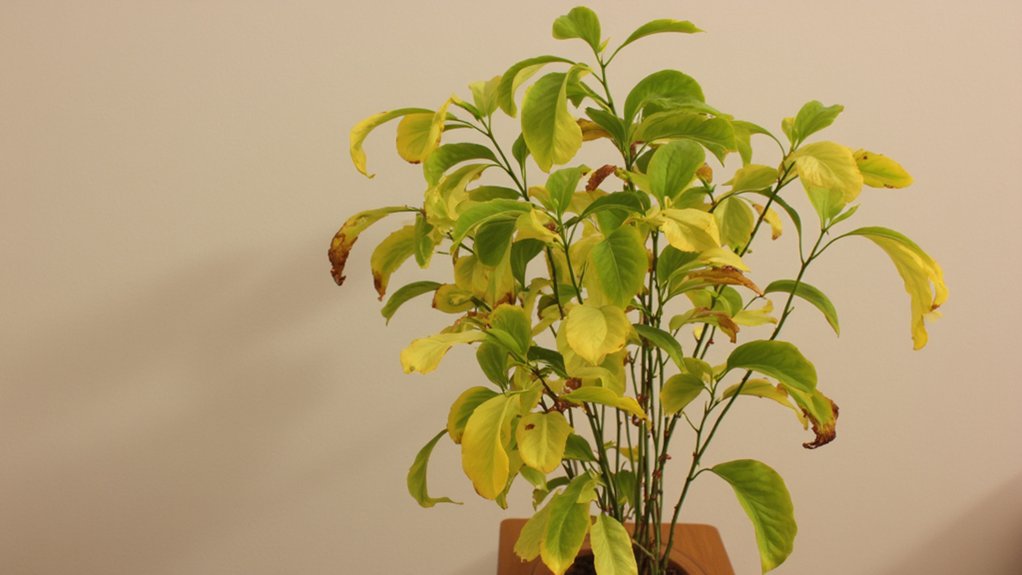You’ll find that caring for a Syngonium indoors isn’t as challenging as it might seem, especially when you understand the plant’s basic needs. These adaptable houseplants, also known as Arrowhead plants, can thrive in your home with the right combination of light, water, and humidity. While they’re relatively low-maintenance, there are several key factors you’ll need to master to keep your Syngonium healthy and growing strong.
Contents
Light Requirements and Ideal Growing Conditions

While Syngonium thrives in bright, indirect light, you’ll want to keep it away from harsh direct sunlight that can scorch its delicate leaves. Place your plant 3-6 feet from an east or north-facing window for ideal growth, or use sheer curtains to filter stronger southern exposure.
Your Syngonium will grow best in temperatures between 60-85°F and humidity levels of 60% or higher. If your home’s air is dry, you’ll need to mist the plant daily or use a humidity tray. The plant also appreciates good air circulation but shouldn’t be placed near heating vents or air conditioners.
Watering Schedule and Humidity Management
Proper watering makes the difference between a thriving Syngonium and one that struggles to survive. You’ll want to water your plant when the top 1-2 inches of soil feels dry to the touch, typically every 5-7 days in summer and 10-14 days in winter.
Your Syngonium needs 60-80% humidity to flourish. If your home’s humidity falls below 50%, you’ll need to mist the leaves daily or use a humidity tray. Simply place your pot on a pebble-filled tray with water just below the stones’ surface, ensuring the pot doesn’t sit directly in water.
During winter months, reduce watering but maintain consistent humidity levels through misting or humidifier use.
Soil Selection and Fertilizing Tips

The best soil mix for your Syngonium combines three essential components: two parts well-draining potting soil, one part perlite, and one part orchid bark. This blend guarantees proper aeration while retaining just enough moisture for healthy root development.
When it comes to fertilizing, you’ll want to feed your Syngonium monthly during the growing season (spring through summer) with a balanced, water-soluble fertilizer (10-10-10). Dilute it to half-strength to prevent root burn. During fall and winter, reduce fertilizing to once every two months, as the plant’s growth naturally slows down.
Remember to flush the soil every few months with plain water to prevent salt buildup.
Pruning and Propagation Methods
Regular maintenance through strategic pruning helps your Syngonium stay healthy and shapely after you’ve established its soil and feeding routine. Using clean, sharp pruning shears, cut stems at a 45-degree angle just above a node to encourage new growth and branching.
To propagate your Syngonium, select a healthy stem with at least two nodes. Cut 4-6 inches below the node, remove lower leaves, and place the cutting in water or moist potting mix. For water propagation, change the water every 3-4 days until roots reach 2-3 inches long. Then, transfer to soil while roots are still young and flexible.
Common Problems and Solutions

While Syngonium plants are generally hardy, you’ll likely encounter a few common issues during their growth. Yellow leaves often signal overwatering – let the top 1-2 inches of soil dry between waterings. If you notice brown, crispy leaf edges, your plant needs more humidity; mist daily or use a pebble tray.
Spider mites and mealybugs can infest your Syngonium. Look for tiny webs or white, cotton-like clusters on leaves. Treat with insecticidal soap, applying every 7 days for 3 weeks. For leggy growth, trim stems back to 6 inches and provide brighter, indirect light.
